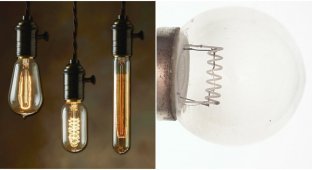When French-born, London-based civil and electrical engineer Jules Albert Berley came to Paris for the 1881 International Electrical Exhibition, he saw many amazing exhibits. 
Such as incandescent lamps, the theatrical recorder, the electric tram, Graham Bell's telephone, the electrical distribution network, the electric boat, and many other cutting-edge technologies of the time. But what fascinated him most was what didn't run on electricity. It ran on air. 
Burley was fascinated by the system of clocks that stood on "elegant light iron posts in the squares, street corners, and other prominent places of the city," as well as in hotels, each of which showed - unusually for the time - "the exact time." These remarkable timepieces were not powered by electricity, but by compressed air, which was supplied from a central station through wrought iron pipes to all the public clocks that worked in a similar way. 
Victor Antoine Popp
This network of pneumatic clocks was first installed in Vienna in 1877 as a demonstration by two Austrian engineers, Victor Antoine Popp and his colleague Resch. Popp and Resch installed several clocks in public buildings and on lampposts in the city streets and kept them running continuously for a whole year.
Popp and Resch then presented their system at the Paris Exhibition in 1878, where it attracted much attention and the jury awarded it a silver medal. That same year, Popp and Resch received permission from the Paris municipal authorities to install a network of public and private clocks. 
The pneumatic clock network was not a power distribution network, but a time distribution network that synchronized a large number of public clocks by sending a pulse of air every minute. 
Parisian pneumatic clockwork
The pipes ran through the city's sewers, subway tunnels, and suburban train networks serving Paris and its suburbs. Each clock contained a metal bellows that moved a 60-tooth wheel one tooth per minute. Compressed air from the unit exited at a pressure of approximately 1-3 atmospheres per square inch and was stored in a high-pressure tank. From there, it entered a low-pressure tank or accumulator through a pressure regulator. 
Its release was controlled by a distribution clock. To keep the clock running and maintain the time interval, the moving weights were lifted by compressed air. An automatic timing mechanism opened a valve to release a 20-second pulse of air every minute, and then closed the valve for 40 seconds. The cycle of 20 seconds - on, 40 seconds - off was repeated every minute. An air pulse was supplied to each clock, located in a private home or office, on the street or in a public building, and moved the minute hand forward one minute. The system worked continuously 24 hours a day, 7 days a week. 
By the time Jules Berley arrived in Paris for the International Exhibition, nearly 32 kilometers of main pipes and 285 kilometers of branches and sub-branches had been laid, serving 750 homes and more than 4,000 pneumatic clocks. 
The clock served Paris exceptionally well until the great flood of 1910, when the Seine rose high enough to flood the compressed air plant. And on January 21, 1910, at 10:53 a.m., thousands of clocks in the system stopped working. However, it was repaired, and the pneumatic clocks continued to operate until 1927, when the invention of accurate mechanical and electrical clocks made the need for a central synchronizing clock obsolete, and the service was discontinued.
Add your comment
You might be interested in:


























